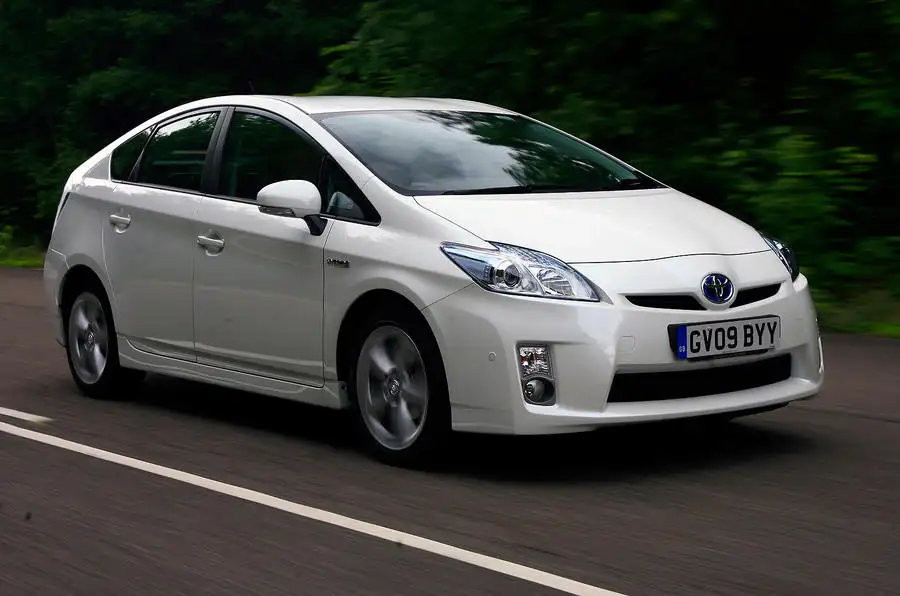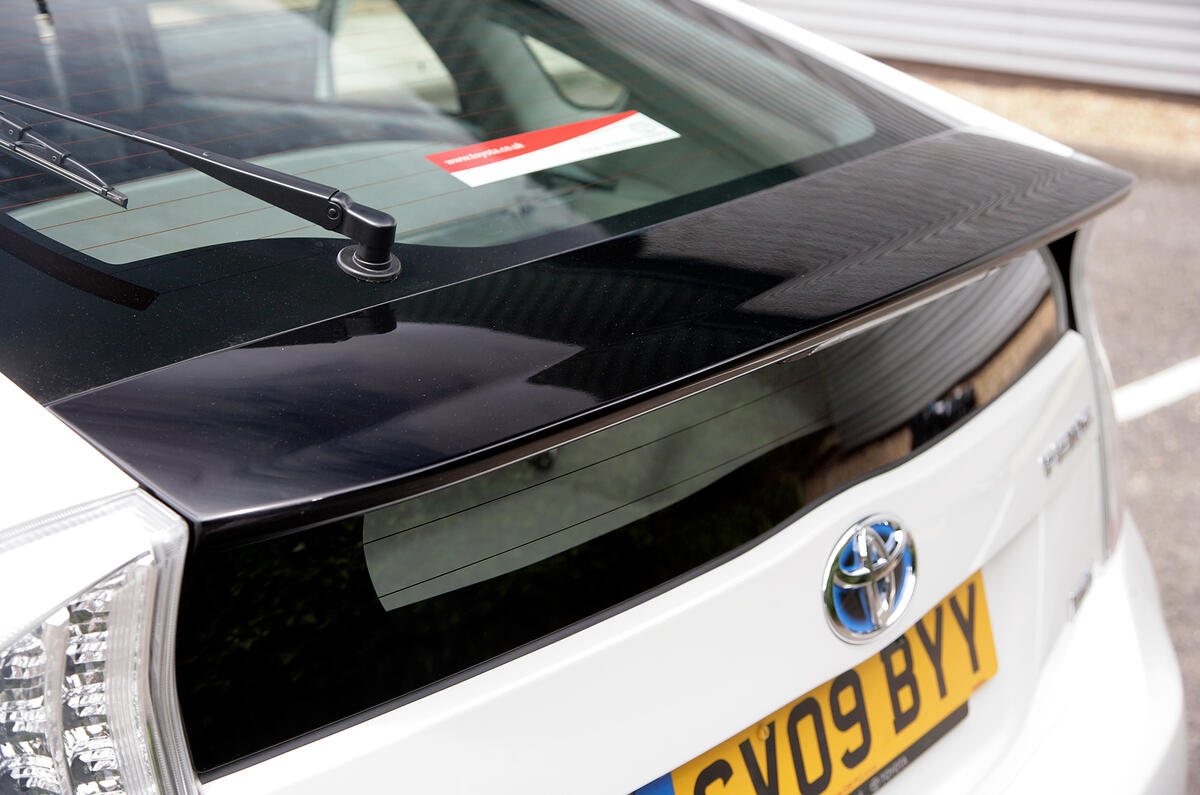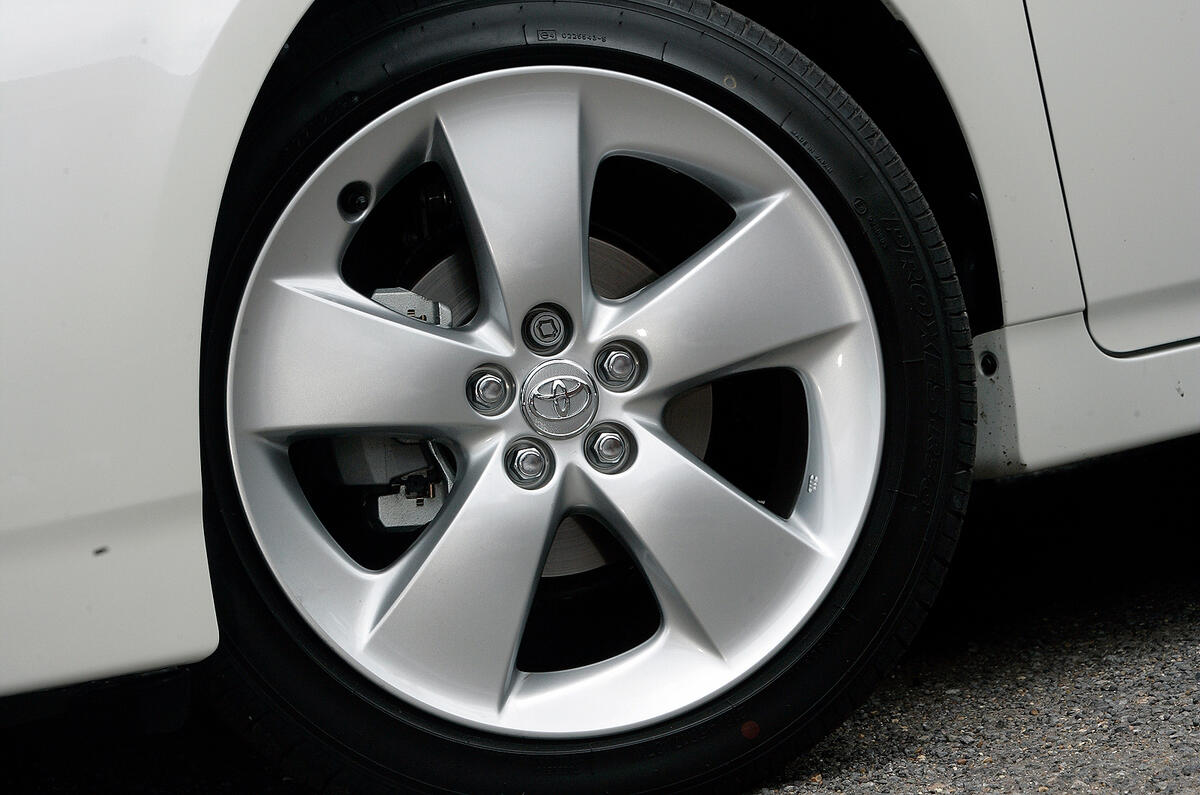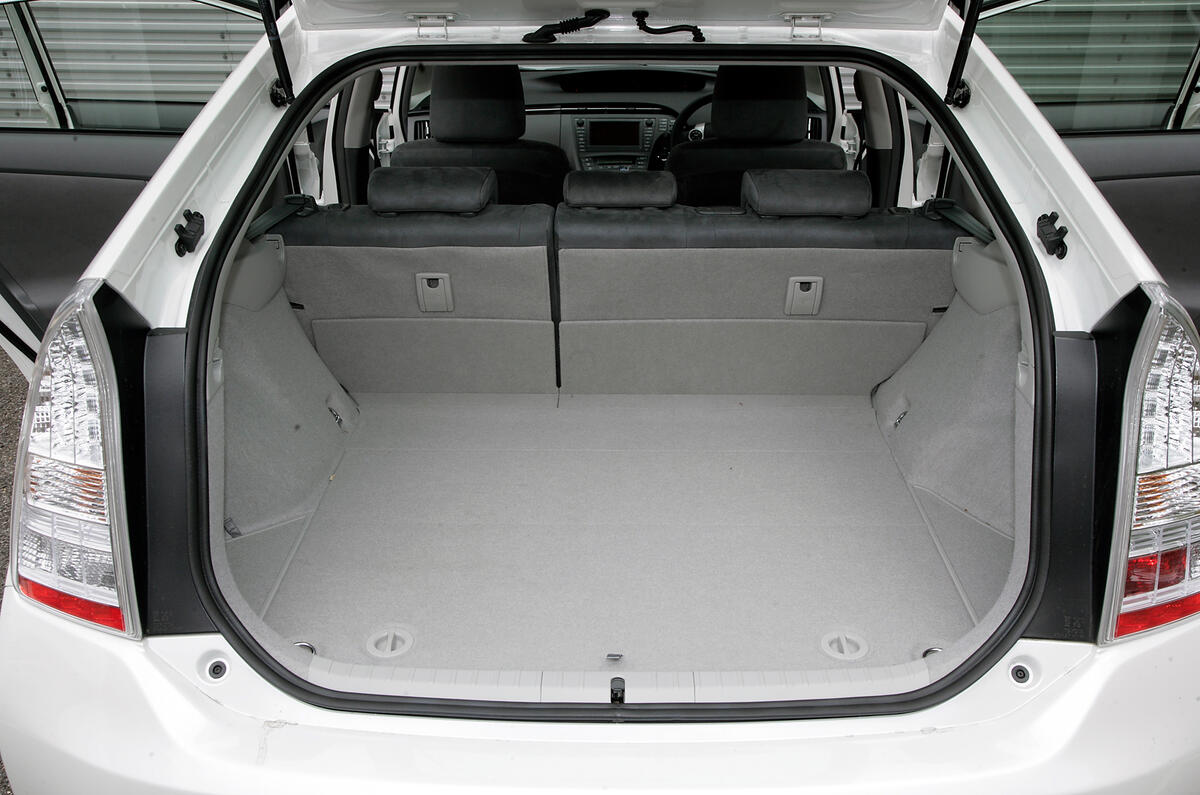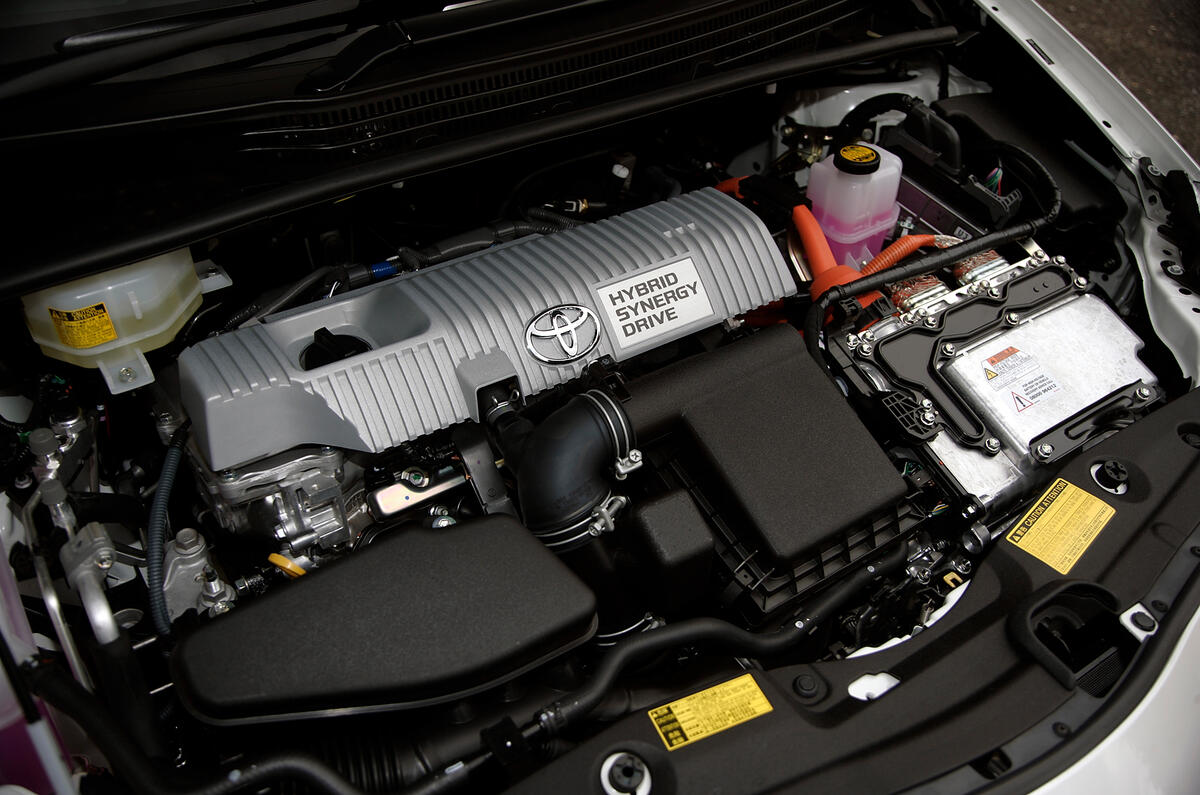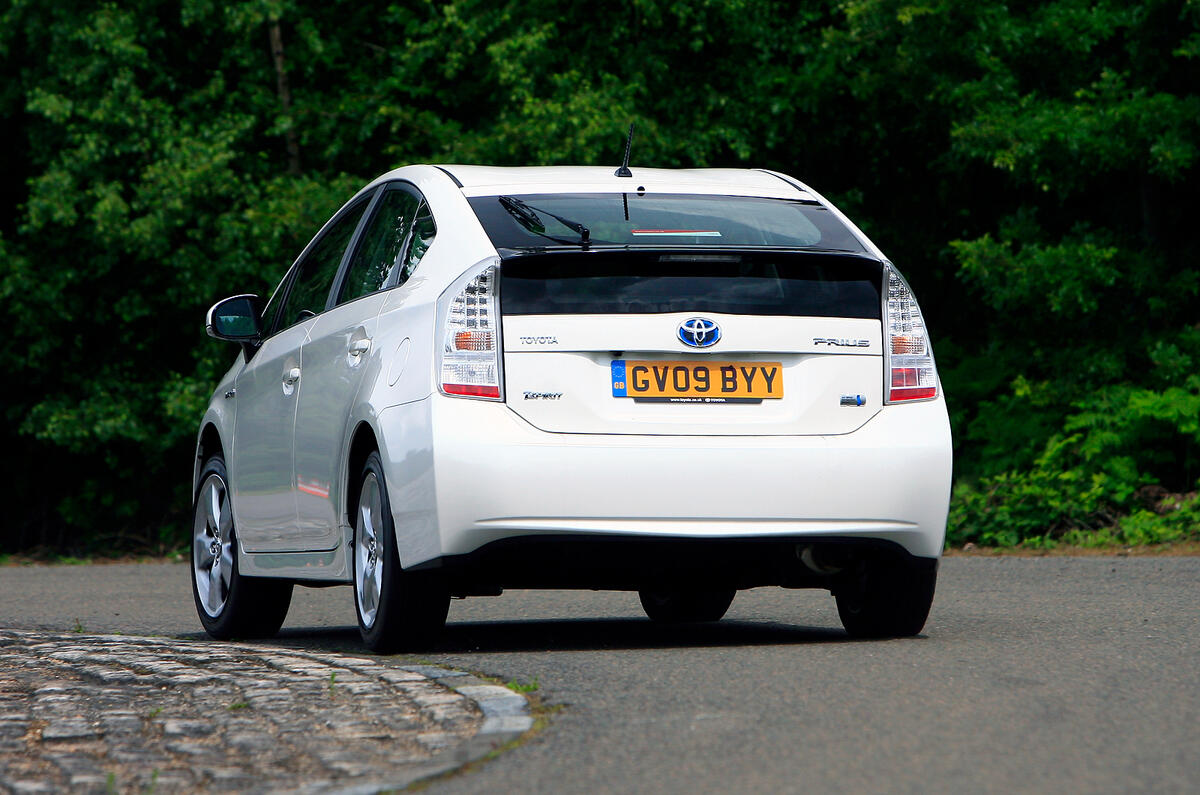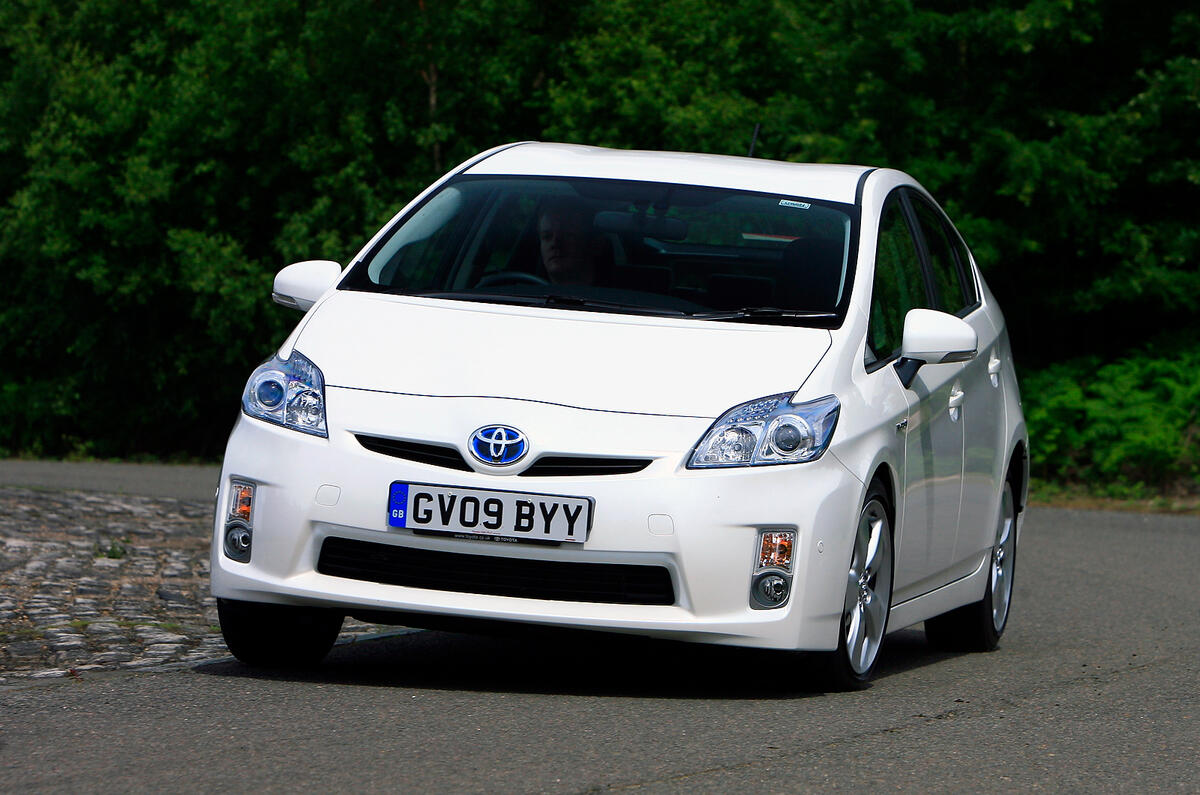Forget normal notions of luxury here in the Toyota Prius. Even the top-spec car has padding-free plastics and a cheap, felted headlining, although you can have leather-trimmed seats. But it somehow doesn’t matter, because the plastics are of very high quality and their textures are interestingly ‘technical’ rather than pretending to be leather grain.
This decor suits the Prius’s futurism well. So does the cabin architecture, centred around an almost concept-car dashboard, with pale green displays: digital speedometer and everything you need to know about the Hybrid Synergy Drive’s activities. This console forms the top surface of a flying buttress between the slideable centre armrest cum storage box and the sweep of the main fascia.
A slender, horizontal, louvred space between the two houses the air vents, and a voluminous pair of gloveboves sits to the left. Below the buttress is a storage tray, which is rather more capacious than the tiny door pockets.
Contained in the centre console is a touch-screen control panel for stereo, sat-nav and a plethora of Prius parameters, plus the air-con controls. Below these is the tiny transmission selector and three buttons to select Eco, Power and EV (electric vehicle) modes. To their right are buttons for the head-up display on high spec models.
The front seats are very comfortable, but even top models lack electric movement apart from lumbar adjustment. Rear leg room is better than in many big saloons and head room is adequate despite the sloping roofline. The rear seats’ backrests flop forward to make a load bay continuous with the high boot floor, below which is a hidden tray on top of the spare wheel.



